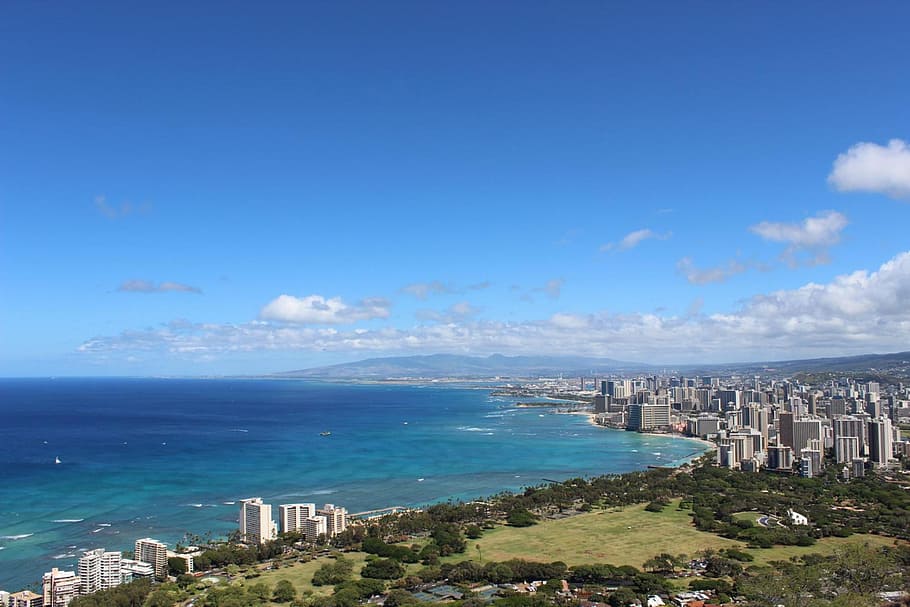設立・運営 2021.12.10
EM10 キャプティブの設立 No.10 (フェーズ3:キャプティブの運営)
目次
当コラム内の文章・画像等の無断転載・引用・複製を固く禁じます。
For those who prefer to read this column in English, the Japanese text is followed by a British English translation, so please scroll down to the bottom of the Japanese text.
キャプティブの設立が完了したら、「保険事業の開始」となる。小さいとは言え、キャプティブはあくまでも「他者のリスク」を引受ける保険会社として設立された以上、その運営、維持管理についても、「許認可事業である一般の保険会社と同程度の経営体制」という、一般企業よりも一段高いリスクマネジメント体制の整備が求められる。
確実にその要求を満たすため、キャプティブの運営、管理に関しては、後述するが、キャプティブ・プログラム全体を統括する「グローバル・リンク」とのコンサルティング契約が非常に重要になる。同時に、キャプティブの申請に際して保険監督当局に提出した「アプリケーション・パッケージ(キャプティブ設立申請書式一式)」に記した「現地キャプティブ・マネジメント会社(キャプティブ・マネージャー)」と「Captive Insurance Company Management Agreement (キャプティブ保険会社管理契約)」を締結する。
1.グローバル・リンクとの契約
キャプティブの事業を開始するにあたって、下記「『キャプティブの運営に関する①』をキャプティブとグローバル・リンク」、「『リスクマネジメント全般に関する②』をキャプティブのオーナー(「親会社」)とグローバル・リンク」の間で締結、「フェーズ3(第3段階:キャプティブの運営)」に進み、キャプティブが保険会社としての活動を開始することになる。
①「キャプティブ事業の維持・管理に関わるコンサルティング業務委託契約書(C)」(年間契約)
②「リスクマネジメントに関わるコンサルティング業務委託契約書」(年間契約)
キャプティブ設立後は、一般的には、上記①の締結のみがおこなわれるが、「リスクは刻々と変化して新たなリスクが生み出されていく。そのようなリスクの変化に対応、対処するためには、キャプティブのイノベーションを含め、継続的なリスクマネジメントが必須であり、そうでなくては折角設立したキャプティブの機能か低下、陳腐化する恐れがあるから」とグローバル・リンクは考えているからである。
その点から、「キャプティブ設立=リスクマネジメントのゴール」ではなく、ロンドン保険・再保険市場との緊密な連携業務も含め、キャプティブの「親会社の保険・リスクマネジメントの最適化、キャプティブのイノベーションを年間を通して継続的におこなう」ため、②の契約を締結するのであり、大変ご好評をいただいている、グローバル・リンク独自の「進化型キャプティブ・プログラム」としてのものである。
2.現地キャプティブ・マネジメント会社(キャプティブ・マネージャー)との契約
キャプティブは、設立地(「ドミサイル」)のキャプティブ関連法に従い、A.現地キャプティブ・マネジメント会社(キャプティブ・マネージャー)、法律事務所、アクチュアリー(保険数理人)、監査および税務担当会計事務所等、これらの「現地有資格専門者・社」、またB.銀行、日本の元受保険会社(キャプティブへの再保険の出再者)、海外の再保険会社(キャプティブからの再保険の契約先)等、「キャプティブ・プログラムのパートナー」と緊密に連携しながら、「保険会社としての業務」を推進していくことになる。
保険の引受、保険料収受、再保険料の支払、再保険金請求、再保険金支払等、また適格な保険数理計算やキャプティブ会計に基づく決算、独立監査、そしてキャプティブ監督当局および税務当局への所要の報告・納税を円滑に実施するために、経験豊かな現地有資格専門者・社等による的確な業務処理が求められる。
現地有資格専門者・社とは、キャプティブが契約当事者となって契約を締結するが、親会社がキャプティブの運営管理を的確に進めていけるよう、専門的な内容を適時、適切にわかりやすく説明できる現地有資格専門者・社等の選定をおこない、現地保険監督当局との窓口となるのが「キャプティブ・マネジメント会社(キャプティブ・マネージャー)」であり、「Captive Insurance Company Management Agreement (キャプティブ保険会社管理契約)」の年間契約を結ぶ。
「フェーズ3(第3段階:キャプティブの運営管理)」の概要と留意点を以下に記したい。

3.キャプティブの運営・管理業務
①再保険料の収受と再々保険料の支払
親会社は、日本の元受保険会社に元受保険料を支払い、元受保険会社は、親会社との間で取り決めた再保険条件(再保険に出す割合、再保険手数料等)に基づき、キャプティブに再保険料を支払う。元受保険会社からは、再保険料の送金日までに、再保険の取引内容と送金額・送金日を記載した「ボルドロ」と呼ばれる再保険契約の明細書と、キャプティブとの再保険契約書が送られてくる。
一方、「キャプティブからの再保険(再々保険)契約」に関しては、それを手配した、グローバル・リンクの業務提携先の再保険ブローカー、「ロイズ・ブローカー」としても認証されている、大手総合商社丸紅傘下の株式会社マルニックスが指定する口座へ、キャプティブは再保険料を支払期日(保険始期日から90日以内で設定)までに払い込む。この手続きは、全ての過程で親会社の確認、了承を受けながら、グローバル・リンクが「現地キャプティブ・マネジメント会社(キャプティブ・マネージャー)」に指示しておこなわれる。
その後、再保険ブローカーから再保険会社に「キャプティブからの再保険料(再々保険料)」が支払われ、再保険会社からマルニックス経由、キャプティブに対して、「補償証明書(再保険の補償内容の明細書)」がグローバル・リンクを介して送付される。
キャプティブが支払う再保険料は高額であり、再保険料の支払日までに遅滞なく元受保険会社から再保険料を受領してキャプティブのキャッシュフローに影響が及ばないように、グローバル・リンクは元受保険会社や再保険ブローカーと連携、調整しながら一連の送金の流れを常にトレースしている。
②保険金の支払
保険事故が発生して元受保険契約で設定した免責金額を超えると、元受保険契約の契約者(=親会社)は元受保険会社に対して保険金請求を行ない、保険金は、元受保険会社が損害査定を行ない、元受保険証券の保険条件にしたがって被保険者(親会社)に対して原則30日以内に速やかに支払われる。
一方、保険金を支払った元受保険会社は、「元受保険会社とキャプティブとの再保険契約書」にしたがい、自社の保有部分を超して支払った保険金について、キャプティブに再保険金の支払請求を行ない、そしてキャプティブは、再保険ブローカーを通じてロンドン保険市場の再保険会社に対して、保有部分を超して支払った再保険金(元受保険会社から見れば「再々保険金」)について、再保険金(再々保険金)の支払請求をおこなうこともある。
しかし、これは一般的でなく、通常「元受保険会社とキャプティブとの再保険契約」、さらに「キャプティブとロンドン保険市場の再保険会社との再保険契約(再々保険契約)」には、「カット・スルー条項」(直接支払条項)が付帯されているため、煩雑な会計処理と送金の負荷をキャプティブに与えないように、「元受保険会社は直接再保険会社へ請求して、再保険会社から元受保険会社に直接支払うこと」が一般的である。
③投資
キャプティブによる投資は、キャプティブの監督当局(米国ハワイ州であれば、保険局)が設定する「投資活動ガイドライン」に従う必要がある。
ガイドラインから外れる投資をおこないたい場合には、当局の許可が必要となる。通常キャプティブ設立後1年経過した後に認められる「キャプティブの投資活動」は、当初は「資本金」としても認められる「低リスクの定期預金」等になるが、潤沢な余剰金が積み上がった後には、キャプティブの監督当局の許可のもと、様々な独自の投資が可能になる。
④会計、税務、監査
一般的に、キャプティブの決算期は、親会社と同時期、もしくは「米国キャプティブであれば、米国企業の税務上の決算期である12月末に統一すること」が多い。しかし、前者の場合には、会計上の決算期と税務上の決算期が異なる場合が出てくるので留意する必要がある。また、キャプティブの銀行口座の残高は、「保険会社としての支払い責任」を果たすため、常に所定の最低資本金を下回らないように注意する必要がある。
キャプティブの税務は、ドミサイルの税制に従うが、保険会社やキャプティブを対象とする税制がある場合には、その専門性が高い現地会計事務所に税務サービスを委託する必要がある。
キャプティブの監査は、キャプティブ・マネジメント会社が作成した財務諸表(案)に対して、キャプティブが委託する独立監査人が行ない、監査済み財務諸表(決算報告書)や監査報告書は、キャプティブの取締役会に報告され、承認を受けることになる。
⑤年次株主総会・取締役会
年次株主総会並びに年次取締役会は、暦年ベースで、年に一度、取締役会で定めた場所・日時に開催される。米国ハワイ州では、取締役会の決定により、株主総会を電話による「遠隔会議システム」で開催してキャプティブの株主代表者が日本から出席することも可能である。議事は、取締役の選任等で、極めて短時間で終了することができる。
グローバル・リンクの顧客の設立したキャプティブの年次総会、年次取締役会は、昨年来のコロナ禍によって、昨年はすべて「オンライン」での開催となった。今年も、11月に予定されているが、各社とも「オンライン」開催の予定である。
議事は、キャプティブのオフィサー(執行役員)の選任、監査済み財務諸表および保険計理人意見書の承認、現地有資格専門者・社の選任、キャプティブ・マネジャーによる報告等である。取締役会の定足数は取締役の過半数であり、代理人による出席が認められないことから、取締役選任には留意が必要である。
⑥配当金の支払
配当の上限は、株主資本から「最低資本金+運転資金」を除く金額になり、キャプティブ監督当局の許可を取得した後に配当金の支払が可能になる。

今回のまとめ
キャプティブは、保険会社としてドミサイルの法令・監督規制を遵守しつつ、「日本の元受保険会社」、「ロンドン再保険市場」、そして「ドミサイルのキャプティブ運営管理の各関係先(パートナー)」とグローバルに緊密な連携をして、円滑な業務運営を実現する必要がある。そこで鍵となるのは、親会社に対してわかりやすくきめ細かくサポートができ、関係先と緊密に連携する「豊富な保険、再保険、キャプティブに関する専門知識を有した、現地のキャプティブ・コンサルティング会社」の存在である。
その理由としては、日本の企業間契約ではその条項そのものの存在、また例え入っていたとしても、その発動の可能性は低い条項であるが、キャプティブと現地のキャプティブ・コンサルティング会社(キャプティブ・マネージャー)との「キャプティブのマネジメント・アグリーメント(マネジメント契約書)」には、「3ヶ月の事前通知で双方が一方的に契約を解除できる条項」が入っているためである。
「期の途中でキャプティブのマネジメントを終了したい」との意向が、現地のキャプティブ・コンサルティング会社(キャプティブ・マネージャー)より出された場合、もし「グローバル・リンク」のようなキャプティブ・コンサルティング会社の存在が無ければ「キャプティブの運営管理が宙に浮いてしまい、次のキャプティブ・マネージャーが見つからない場合、キャプティブの免許が取り消される可能性があるからである。
グローバル・リンクでもそのような「契約解除」が発生したケースを最近事実として確認していることを付言しておきたい。この点、十分留意のうえ、日本でプログラム全体を統括する「キャプティブ・コンサルティング会社」は十分な専門性と実力を有している会社を選任されることを強く勧めたい。
執筆・翻訳者:羽谷 信一郎
It is strictly forbidden to publish, copy, quote or distribute the contents of this column without permission.
English Translation
EM (Establishment and Management) 10 – Establishment of a captive No.10 (Phase 3: Management of the captive)
Once a captive has been established, it is ready to “commence insurance business”. Although small in size, captives are set up to underwrite “other people’s risks” and must be operated and maintained at the same level as a licensed insurance company, which is a higher level of risk management than a normal company.
In order to ensure that this requirement is met, it is very important that the captive is managed through a consulting arrangement with Global Link, who will oversee the entire captive programme, as described later.At the same time, it is important to note the following information in the application package submitted to the insurance regulator when applying to establish a captive
and “a Captive Insurance Company Management Agreement” should be signed with the local captive management company (captive manager).
1. Contracts with Global Link
At the start of the captive’s operations, the following “Contract on the Operation of the Captive ①” is entered into between the captive and Global Link, and “Contract on General Risk Management ②” is entered into between the captive’s owner (the “Parent Company”) and Global Link, and the captive proceeds to Phase 3 (Phase 3: Operation of the Captive), where the captive begins its activities as an insurance company.
① “Consulting Services Contract (C) for Maintenance and Management of Captive Business” (annual contract)
② “Consulting Services Contract for Risk Management” (annual contract)
After the establishment of a captive, generally only the above 1① will be concluded, but “risks change from moment to moment and new risks are created. However, Global Link believes that risks change from time to time and new risks are created. In order to cope with such changes in risks, continuous risk management, including innovation of the captive, is essential, otherwise the function of the captive may become obsolete.
This is why we have entered into ② as part of Global Link’s very successful and unique “Evolutionary Captive Programme” to “optimise the insurance and risk management of the parent company and to continue to innovate the captive throughout the year”, including working closely with the London insurance and reinsurance market.
2. Contract with the local captive management company (captive manager)
In accordance with the captive laws of the domicile of incorporation (the “domicile”), the captive may contract with: A. local captive management companies (captive managers), law firms, actuaries, audit and tax accounting firms, and other “qualified local professionals”; and B. banks, Japanese primary insurance companies (ceding reinsurers to the captive), foreign reinsurance companies (ceding reinsurance companies to which the captive has retrocession contracts), and other “qualified local professionals”.
In order to ensure the smooth implementation of underwriting, premium collection, reinsurance premium payment, reinsurance claims, reinsurance payments, etc., as well as qualified actuarial and captive accounting, independent audits, and required reporting and tax payments to the captive supervisory and tax authorities, it is essential that experienced and qualified local professionals and companies handle the business.
In order to ensure that the parent company is able to manage the captive in a timely, appropriate and understandable manner, it is the responsibility of the captive management company to select a qualified local professional to act as a liaison with the local insurance regulator. The “Captive Manager” will be the point of contact with the local insurance regulator and will sign an annual “Captive Insurance Company Management Agreement” with the captive insurance company.
“The following is an overview of Phase 3, the management and administration of the captive.
3. Captive management and administration
The parent company pays primary premiums to the Japanese primary insurer, which in turn pays reinsurance premiums to the captive based on the reinsurance terms and conditions (e.g., percentage to be reinsured, reinsurance commissions, etc.) agreed upon with the parent company. By the date of remittance of the reinsurance premiums, the primary insurer sends a statement of the reinsurance contract, called a ” Bordereaux “, which describes the details of the reinsurance transaction, the amount remitted and the date of remittance, as well as the reinsurance contract with the captive.
On the other hand, for the “reinsurance contract from the captive”, the captive will pay the reinsurance (retrocession) premiums to the account designated by Marnix Corporation, a subsidiary of Marubeni Corporation, a certified Lloyd’s broker and Global Link’s business partner, who arranges the reinsurance contract. The captive pays the reinsurance(retrocession) premiums by the due date (set within 90 days of the inception date of the policy). Global Link instructs the “local captive management company” (captive manager), with the parent company’s confirmation and approval at all stages of the process.
The reinsurance broker then pays the reinsurance company the “reinsurance (retrocession) premium from the captive” and the reinsurance company, via Marnix, sends the captive a “certificate of indemnity” (a statement of reinsurance cover) via Global Link.
As the reinsurance premiums paid by the captive are high, Global Link works closely with the primary insurer and reinsurance broker to ensure that the reinsurance premiums are received by the primary insurer without delay and that the captive’s cash flow is not affected to trace the flow of remittances.
② Payment of insurance claims
In the event of an accident exceeding the deductible set in the primary insurance contract, the policyholder (i.e. the parent company) will make a claim to the primary insurance company, which will assess the loss and promptly pay the insured (i.e. the parent company) within 30 days in accordance with the insurance conditions in the primary insurance policy.
On the other hand, in accordance with the “Reinsurance Agreement between the Primary Insurer and the Captive”, the paying primary insurer makes a claim to the captive for reinsurance in excess of its retention, and the captive, through its reinsurance broker, makes a claim to a reinsurance company in the London insurance market for reinsurance (retrocession) insurance in excess of its retention.
This is not common, however, as the reinsurance contract between the primary insurer and the captive, as well as the reinsurance contract between the captive and a reinsurance company in the London insurance market (the “reinsurance contract”), usually contains a “cut-through clause” (direct payment clause).
In order to avoid burdening the captive with cumbersome accounting and remittance procedures, it is common practice for the primary insurer to bill the reinsurer directly and for the reinsurer to pay the primary insurer directly.
③ Investment
Investments by captives must follow the “Investment Activity Guidelines” set by the captive’s regulator (in the State of Hawaii, the Insurance Department).
If a captive wishes to invest outside of these guidelines, it must obtain permission from the regulator. After a captive has been in existence for one year, it is usually allowed to invest in “low risk time deposits”, which are also considered “capital”.
④ Accounting, taxation and auditing
Generally, a captive’s fiscal year ends at the same time as the parent company’s, or “if it is a US captive, at the end of December, which is the tax year end for US companies”. However, it should be noted that in the former case, the accounting period and the tax period may differ. It should also be noted that the balance in the captive’s bank account should always be kept below the prescribed minimum capital in order to fulfil its “payment responsibilities as an insurance company”.
The taxation of the captive is subject to the tax regime of the domicile, but if there is a tax regime covering the insurance company or captive, the tax services should be outsourced to a local accounting firm with expertise in this area.
The audit of the captive is carried out by an independent auditor commissioned by the captive on the draft financial statements prepared by the captive management company, and the audited financial statements and audit report are reported to the captive’s board of directors for approval.
⑤ Annual General Meeting and Board of Directors Meeting
The Annual Meeting of Shareholders and the Annual Meeting of the Board of Directors are held once a year on a calendar year basis at a time and place determined by the Board of Directors. In the State of Hawaii, the Board of Directors may decide to hold the meeting by teleconference, allowing captive shareholders to attend from Japan. The agenda, including the election of directors, can be completed in a very short time.
The annual general meetings and annual board meetings of captives established by Global Link clients were all held “online” last year, due to the covid-19 disaster that occurred last year. This year’s meeting, scheduled for November, will again be “online” for all companies.
The agenda includes the election of the captive’s officers, approval of the audited financial statements and insurance accountant’s opinion, the appointment of local qualified professionals and companies, and a report by the captive manager. Care should be taken when appointing directors, as the quorum for meetings is a majority of directors and proxies are not permitted.
⑥ Payment of dividends
The maximum amount of dividends that can be paid is the amount of shareholders’ equity less “minimum capital plus working capital”, and dividends can only be paid after obtaining the approval of the captive supervisory authority.
Summary of this issue
As an insurance company, a captive needs to comply with Domicile’s laws and regulations, and at the same time, to work closely with “Japanese primary insurers”, “London reinsurance market” and “Domicile’s partners in captive operation and management” on a global basis to achieve smooth business operation. The key to this is the presence of a local captive consultancy with extensive insurance, reinsurance and captive expertise that can provide clear and detailed support to the parent company and work closely with the partners.
This is because the captive’s management agreement with the local captive consulting firm (captive manager) includes a clause that allows both parties to unilaterally terminate the agreement with three months’ notice, whereas in Japanese corporate contracts the clause itself does not exist or, if it does, is unlikely to be triggered.
This is because if a local captive consulting company (captive manager) wishes to terminate the management of the captive at the end of the term, without the presence of a captive consulting company such as Global Link, the management of the captive would be in limbo and the captive’s licence could be revoked if a new captive manager cannot be found.
It should be noted that Global Link has recently seen such a “termination of contract” occur. With this in mind, we strongly recommend that the “captive consulting firm” responsible for managing the entire program in Japan should be a firm with sufficient expertise and capability.
Author/translator: Shinichiro Hatani

